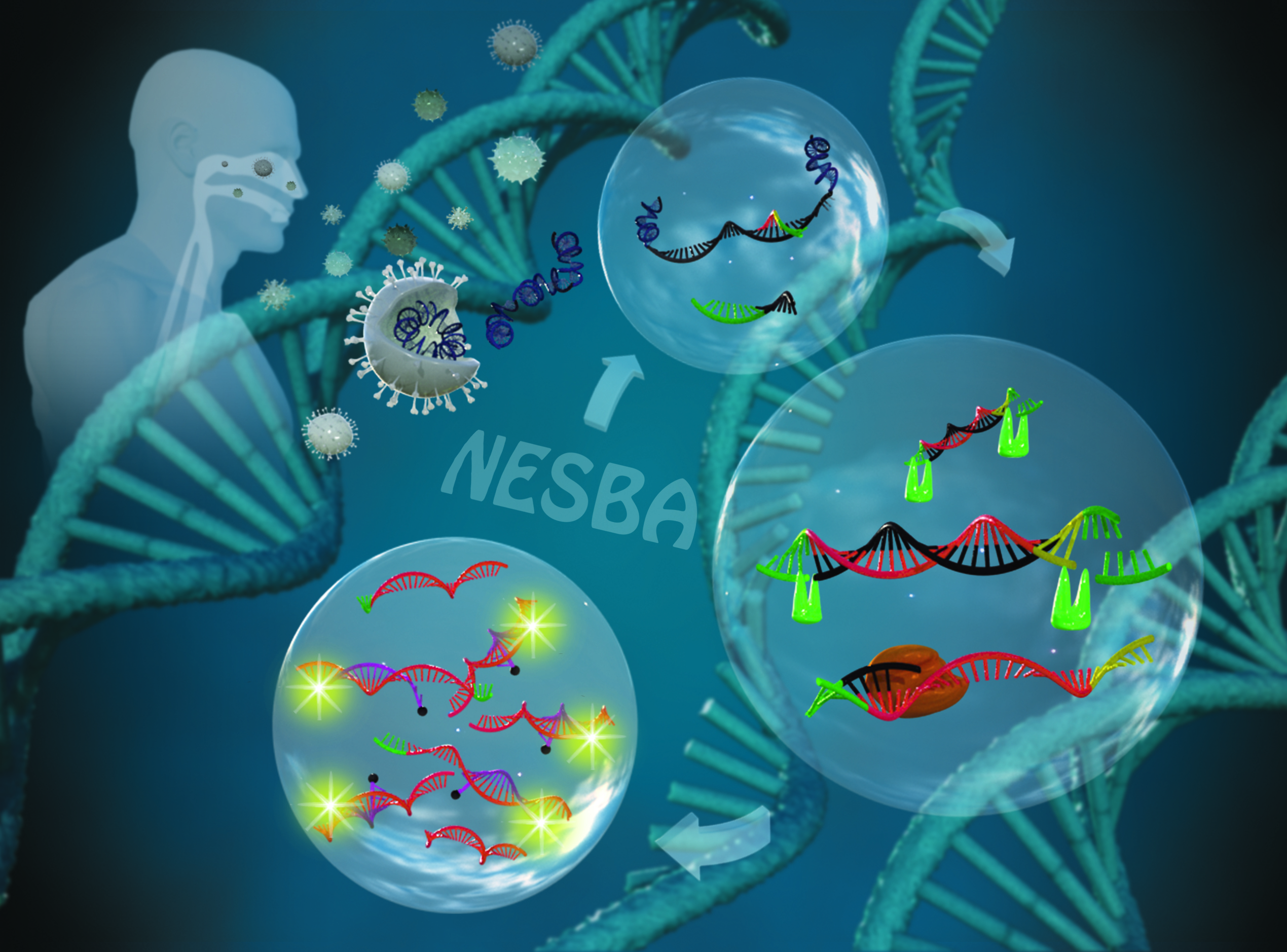- [Inside front cover] Ultrasensitive version of nucleic acid sequence-based amplification (NASBA) utilizing a nicking and extensi
- 관리자 |
- 2021-07-02 15:40:28|
- 503
- 2021-07-02 15:40:28|
Title: Ultrasensitive version of nucleic acid sequence-based amplification (NASBA) utilizing a nicking and extension chain reaction system
Author: Yong Ju, Hyo Yong Kim, Jun Ki Ahn and Hyun Gyu Park
Journal: Nanoscale, 2021, 13, 10785-10791
Abstract : Nucleic acid sequence-based amplification (NASBA) is a transcription-based isothermal amplification technique especially designed for the detection of RNA targets. The NASBA basically relies on the linear production of T7 RNA promoter-containing double-stranded DNA (T7DNA), and thus the final amplification efficiency is not sufficiently high enough to achieve ultrasensitive detection. We herein ingeniously integrate a nicking and extension chain reaction system into the NASBA to establish an ultrasensitive version of NASBA, termed Nicking and Extension chain reaction System-Based Amplification (NESBA). By employing a NESBA primer set designed to contain an additional nicking site at the 5’ end of a NASBA primer set, the T7DNA is exponentially amplified through continuously repeated nicking and extension chain reaction by the combined activities of nicking endonuclease (NE) and reverse transcriptase (RT). As a consequence, a much larger number of RNA amplicons would be produced through the transcription of the amplified T7DNA, greatly enhancing the final fluorescence signal from the molecular beacon (MB) probe binding to the RNA amplicon. Based on this unique design principle, we successfully identified the target respiratory syncytial virus A (RSV A) genomic RNA (gRNA) down to 1 aM under isothermal conditions, which is 100-fold more sensitive than regular NASBA.

Author: Yong Ju, Hyo Yong Kim, Jun Ki Ahn and Hyun Gyu Park
Journal: Nanoscale, 2021, 13, 10785-10791
Abstract : Nucleic acid sequence-based amplification (NASBA) is a transcription-based isothermal amplification technique especially designed for the detection of RNA targets. The NASBA basically relies on the linear production of T7 RNA promoter-containing double-stranded DNA (T7DNA), and thus the final amplification efficiency is not sufficiently high enough to achieve ultrasensitive detection. We herein ingeniously integrate a nicking and extension chain reaction system into the NASBA to establish an ultrasensitive version of NASBA, termed Nicking and Extension chain reaction System-Based Amplification (NESBA). By employing a NESBA primer set designed to contain an additional nicking site at the 5’ end of a NASBA primer set, the T7DNA is exponentially amplified through continuously repeated nicking and extension chain reaction by the combined activities of nicking endonuclease (NE) and reverse transcriptase (RT). As a consequence, a much larger number of RNA amplicons would be produced through the transcription of the amplified T7DNA, greatly enhancing the final fluorescence signal from the molecular beacon (MB) probe binding to the RNA amplicon. Based on this unique design principle, we successfully identified the target respiratory syncytial virus A (RSV A) genomic RNA (gRNA) down to 1 aM under isothermal conditions, which is 100-fold more sensitive than regular NASBA.

| 첨부파일 |
|
|---|

